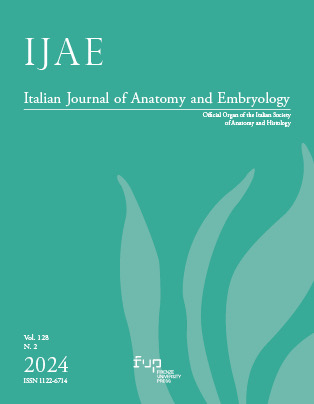Published 2024-12-31
Keywords
- anatomy,
- cadaver dissection,
- aesthetic medicine,
- anatomy teaching
How to Cite
Copyright (c) 2024 Giulio Nittari, Demetris Savva, Enea Traini, Daniele Tomassoni, Francesco Amenta

This work is licensed under a Creative Commons Attribution 4.0 International License.
Funding data
-
Università degli Studi di Camerino
Grant numbers MAMT 2024
Abstract
Cadaver dissection in post-graduate training programs in aesthetic medicine offers physicians the opportunity of a three-dimensional knowledge of the face morphology, the individual regions, and layers of the face with all neighbouring structures including the main arteries, veins, and nerves. This study has evaluated the effectiveness of this educational intervention, in attendants to the second level vocational Master course in aesthetic medicine and therapeutics co-organized by the universities of Camerino and Turin. Two hundred medicine doctors attending the first year of the course have followed, as a part of the human anatomy course, a 2-day cadaver training on face anatomy at the Hellenic Neurosurgical Research Centre in Athens, Greece. The impact of the program was evaluated by a pre- and post-course multiple choice questions (MCQs) test. Different sets of MCQs were selected for the pre- and post-course test to avoid any recall bias. All 200 participants completed the tests, and their answers were analysed. A significant difference in the number of correct answers and in the scores obtained was found between pre- and post-course MCQs. Answers to questions on muscles of facial expression, muscles of the head, connective tissue and ligaments of the face and blood vessels and nerves of the face were those more correct after the cadaver lab practical course. The results showing a better knowledge of facial anatomical details after a practical cadaver lab suggest the need of including practical cadaver dissection activities in medical training in aesthetic medicine.

